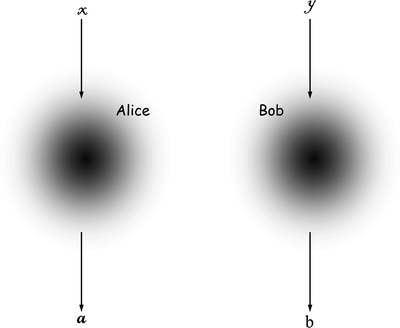

This is exactly what physicists think happened immediately after the Big Bang during the epoch called inflation, which was first hypothesized by physicists Alan Guth and Andrei Linde in the 1980s. "Therefore, empty space can certainly expand faster than light." "Since nothing is just empty space or vacuum, it can expand faster than light speed since no material object is breaking the light barrier," said theoretical astrophysicist Michio Kaku on Big Think. Empty space contains no material substance and therefore, by definition, has no mass. Photons, by their very nature, cannot exceed the speed of light, but particles of light are not the only massless entity in the universe. Keep in mind that Einstein's Special Theory of Relativity states that nothing with mass can go faster than the speed of light, and as far as physicists can tell, the universe abides by that rule. (Casey Stark (UC Berkeley) and Khee-Gan Lee (MPIA)) A 3D map of the cosmic web at a distance of 10.8 billion light years from Earth. While these particles are traveling faster than light does in water, they're not actually breaking the cosmic speed limit of 670,616,629 miles per hour.

Similarly, when electrons travel through water at speeds faster than light speed in water, they generate a shock wave of light that sometimes shines as blue light, but can also shine in ultraviolet. Once it reaches the speed of sound, the waves bunch up creating a shock front that forms a loud sonic boom. When a rocket, for example, travels through air, it generates pressure waves in front that move away from it at the speed of sound, and the closer the rocket reaches that sound barrier, the less time the waves have to move out of the object's path. Particles, like these electrons, that surpass the speed of light in water, or some other medium such as glass, create a shock wave similar to the shock wave from a sonic boom.

In water, light travels at 75 % the speed it would in the vacuum of outer space, but the electrons created by the reaction inside of the core travel through the water faster than the light does. It's called Cherenkov radiation, and it shows up as a blue glow inside of nuclear reactors, like in the Advanced Test Reactor at the Idaho National Laboratory in the image to the right.Ĭherenkov radiation is named for Soviet scientist Pavel Alekseyevich Cherenkov, who first measured it in 1934 and was awarded the Nobel Physics Prize in 1958 for his discovery.Ĭherenkov radiation glows because the core of the Advanced Test Reactor is submerged in water to keep it cool. In fact, this light boom happens on a daily basis in facilities around the world - you can see it with your own eyes. While these do not disprove Einstein's theory, they give us insight into the peculiar behavior of light and the quantum realm. Since Einstein, physicists have found that certain entities can reach superluminal (that means "faster-than-light") speeds and still follow the cosmic rules laid down by special relativity. (The reason particles of light, called photons, travel at light speeds is because they have no mass.) To do so would require an infinite amount of energy and, in the process, the object's mass would become infinite, which is impossible. These colossal machines accelerate subatomic particles to more than 99.99% the speed of light, but as Physics Nobel laureate David Gross explains, these particles will never reach the cosmic speed limit. The closest humankind has ever come to reaching the speed of light is inside of powerful particle accelerators like the Large Hadron Collider and the Tevatron. This little equation predicts that nothing with mass can move as fast as light, or faster. But in 1905, Einstein forever changed the way physicists view the universe.Įinstein's Special Theory of Relativity permanently tied mass and energy together in the simple yet fundamental equation E=mc^2. Before Einstein, mass - the atoms that make up you, me, and everything we see - and energy were treated as separate entities.


 0 kommentar(er)
0 kommentar(er)
